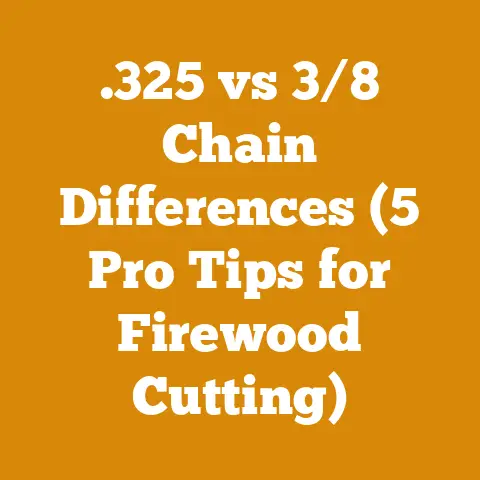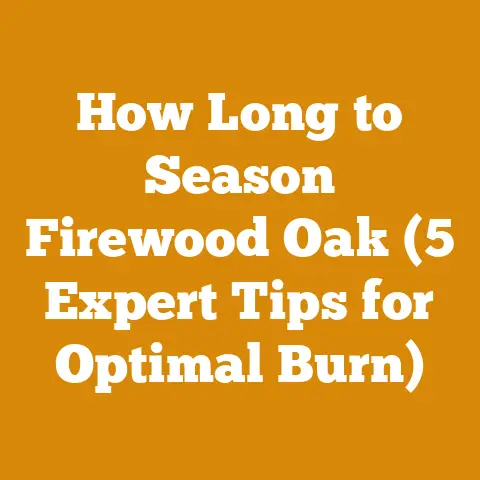Maple Tree Bark in Winter (5 Signs of Hidden Wood Decay)
Maple Tree Bark in Winter: Decoding 5 Signs of Hidden Wood Decay & Budgeting for Removal
As someone who’s spent years felling, processing, and appreciating the majestic maple, I’ve learned that winter reveals secrets hidden beneath the summer canopy. One of the most crucial is the state of a maple’s bark, especially concerning wood decay. This article isn’t just about identifying problems; it’s about understanding the potential costs involved in addressing them, whether that means simple pruning or full-blown tree removal. I’ll walk you through the signs of decay, the factors influencing the costs of dealing with them, and how to budget realistically.
The Silent Threat: Why Winter Bark Inspection Matters
Winter provides a unique opportunity to assess tree health. With leaves gone, the bark is fully exposed, allowing for a clear view of potential issues. Decay, often caused by fungal infections, weakens the tree’s structure, making it a hazard during storms. Catching these problems early can save you money and prevent property damage. Ignoring them can lead to significant expenses and potential danger.
5 Telltale Signs of Wood Decay on Maple Tree Bark in Winter
Before diving into costs, let’s arm ourselves with the knowledge to identify decay. Keep in mind that these signs, while indicative, should be confirmed by a certified arborist for accurate diagnosis.
-
Loose or Detached Bark: This is often the first sign of internal decay. Healthy bark is firmly attached to the tree’s trunk. If you can easily peel off large sections, it suggests that the underlying wood is rotting, causing the bark to separate. Look for this especially near the base of the tree and around branch junctions.
-
Cankers and Open Wounds: Cankers are sunken, dead areas on the bark, often elliptical or irregular in shape. They indicate areas where the tree’s vascular system has been damaged, making it vulnerable to fungal infection. Open wounds, from physical damage or improper pruning, are also entry points for decay-causing organisms. The size and location of the canker significantly impact the tree’s structural integrity.
-
Fungal Fruiting Bodies (Mushrooms or Conks): The presence of mushrooms, conks (shelf-like fungal growths), or other fruiting bodies on the bark is a definitive sign of advanced decay. These are the reproductive structures of fungi that are actively consuming the wood inside the tree. Different types of fungi can indicate different types and severity of decay. For example, Ganoderma applanatum is a common wood-decaying fungus that produces large, shelf-like conks.
-
Discoloration and Soft Spots: Look for areas of the bark that are significantly darker or lighter than the surrounding healthy bark. Soft spots, which can be identified by pressing on the bark, indicate that the wood beneath is decaying and losing its density.
-
Unusual Swelling or Bumps: Sometimes, the tree attempts to compartmentalize the decay by forming callus tissue around the affected area. This can result in unusual swelling or bumps on the bark. While this is a natural defense mechanism, it also indicates that there is an underlying problem.
Understanding the Cost Factors: A Deep Dive
Now, let’s get to the heart of the matter: the costs associated with addressing wood decay in maple trees. This is where my experience comes into play. I’ve seen firsthand how seemingly small issues can escalate into major expenses if left unaddressed. Remember, prices can vary widely based on your location, the size of the tree, the severity of the decay, and the qualifications of the tree service you hire.
1. Assessment and Diagnosis Costs
Before any work begins, you’ll need a professional assessment.
-
Arborist Consultation Fee: Expect to pay anywhere from $75 to $250 for an initial consultation with a certified arborist. This fee covers their time to inspect the tree, assess the extent of the decay, and provide recommendations for treatment or removal. I always recommend getting multiple opinions. I once had an arborist recommend complete removal of a maple that was then saved by another arborist by cabling and crown reduction.
-
Advanced Diagnostic Testing (Optional): In some cases, the arborist may recommend advanced diagnostic testing, such as resistograph testing or sonic tomography, to get a more detailed picture of the internal decay. These tests can cost between $200 and $500 per tree. While seemingly expensive, they can save you money in the long run by providing a more accurate assessment and preventing unnecessary removal.
2. Treatment Costs
If the decay is caught early and is localized, treatment may be an option. However, it’s important to understand that treating wood decay is often a long-term process and may not always be successful.
-
Pruning and Decay Removal: This involves removing dead or decaying branches and cleaning out any cavities in the trunk. The cost of pruning can range from $100 to $1,000 or more, depending on the size of the tree and the complexity of the work. Expect to pay more if the arborist needs to use specialized equipment, such as a bucket truck.
-
Cavity Filling: In some cases, the arborist may recommend filling cavities with a specialized material to prevent further decay and provide structural support. The cost of cavity filling can range from $200 to $1,000 or more, depending on the size and location of the cavity. This practice is becoming less common as research suggests it can sometimes trap moisture and exacerbate decay.
-
Fungicide Treatments: While fungicides can sometimes help to slow the spread of decay, they are not a cure. Fungicides are most effective when used preventatively, before decay has become established. The cost of fungicide treatments can range from $50 to $200 per application.
-
Cabling and Bracing: If the tree has structural weaknesses due to decay, cabling and bracing can be used to provide additional support. Cabling involves installing steel cables between branches to reduce stress, while bracing involves inserting metal rods through the trunk to provide support. The cost of cabling and bracing can range from $500 to $2,000 or more, depending on the size of the tree and the complexity of the work. This is a viable option when the tree is of sentimental value.
3. Tree Removal Costs
If the decay is too extensive or the tree poses a significant safety hazard, removal may be the only option. This is the most expensive option, but it’s often the most prudent in the long run.
-
Basic Tree Removal: The cost of basic tree removal can range from $150 to $1,500 or more, depending on the size of the tree, its location, and the complexity of the work. For example, a small maple tree in an open area may only cost a few hundred dollars to remove, while a large maple tree near power lines or buildings could cost several thousand dollars.
-
Crane Removal: If the tree is particularly large or is located in a difficult-to-access area, the tree service may need to use a crane to remove it. Crane removal can add significantly to the cost, potentially doubling or tripling the price of basic tree removal. I once had to pay $4,000 for a crane removal of a large oak tree that was threatening my neighbor’s house.
-
Stump Grinding: After the tree is removed, you’ll likely want to have the stump ground down. Stump grinding typically costs between $2 and $5 per inch of stump diameter. For example, a 30-inch stump would cost between $60 and $150 to grind.
-
Root Removal: If you want to remove the entire root system, this will add to the cost. Root removal can be a labor-intensive process and may require specialized equipment.
-
Permits: Depending on your location, you may need to obtain a permit before removing a tree. Permit fees can range from $50 to $500 or more.
4. Location, Location, Location: Accessibility Matters
The accessibility of the tree significantly impacts the cost of removal. Trees in easily accessible areas are cheaper to remove than those in confined spaces or near power lines. A tree close to a house or other structure will also increase the cost due to the added risk and complexity of the removal process.
5. Seasonality: Timing is Everything
Tree service companies are often busiest during the spring and fall, when homeowners are preparing their properties for the growing season or cleaning up after storms. You may be able to get a better price if you schedule tree removal during the off-season (winter or summer). However, be aware that winter weather can sometimes make tree removal more difficult and dangerous.
6. Wood Utilization: Can You Recoup Some Costs?
Depending on the type of wood and its condition, you may be able to sell the wood for lumber, firewood, or other purposes. This can help to offset the cost of tree removal. However, be aware that the value of the wood will depend on its quality and the demand in your local market. You can either mill the wood yourself using an Alaskan Mill or hire a local sawyer to mill the tree onsite for you. This is a great option for sentimental trees.
7. Debris Removal: Don’t Forget the Cleanup
The cost of debris removal is often included in the overall price of tree removal, but it’s important to clarify this with the tree service company. Debris removal can include chipping the branches, hauling away the logs, and cleaning up the area around the tree. If you’re willing to do some of the cleanup yourself, you may be able to save some money.
Budgeting for Tree Removal or Treatment: A Step-by-Step Guide
Now that we’ve covered the cost factors, let’s talk about how to budget for tree removal or treatment. Here’s a step-by-step guide:
- Get Multiple Quotes: As I mentioned earlier, it’s essential to get multiple quotes from different tree service companies. This will give you a better understanding of the range of prices in your area and allow you to compare services and expertise.
- Ask for a Detailed Breakdown: Make sure that each quote includes a detailed breakdown of the costs involved, including labor, equipment, debris removal, and any other fees. This will help you to understand exactly what you’re paying for and avoid any surprises.
- Check Credentials and Insurance: Before hiring a tree service company, make sure that they are properly licensed and insured. This will protect you in case of any accidents or damage to your property.
- Consider the Long-Term Costs: When deciding whether to treat or remove a tree, consider the long-term costs. Treating a tree may seem like the cheaper option in the short term, but if the decay is likely to continue to spread, you may end up spending more money in the long run.
- Factor in Unexpected Costs: It’s always a good idea to add a buffer to your budget to account for any unexpected costs that may arise. For example, you may need to pay extra for permits, crane rental, or root removal.
- Explore Financing Options: If you’re facing a large tree removal bill, you may want to explore financing options, such as a home equity loan or a personal loan.
- Prioritize Safety: Ultimately, the most important thing is to prioritize safety. If a tree poses a significant hazard to your property or your family, it’s best to have it removed, even if it’s expensive.
Real-World Examples and Case Studies
To further illustrate the cost factors involved in tree removal and treatment, let’s look at a few real-world examples:
- Case Study 1: Small Maple Tree Removal: A homeowner in a suburban area had a small (20-foot) maple tree that was showing signs of early decay. The tree was located in an open area and was easily accessible. The homeowner received three quotes for tree removal, ranging from $200 to $400. They chose the lowest quote and were satisfied with the work.
- Case Study 2: Large Maple Tree Removal with Crane: A homeowner in a rural area had a large (80-foot) maple tree that was severely decayed and threatening to fall on their house. The tree was located in a difficult-to-access area and required the use of a crane for removal. The homeowner received three quotes, ranging from $5,000 to $8,000. They chose the middle quote and were relieved to have the tree removed safely.
- Case Study 3: Maple Tree Treatment: A homeowner had a mature maple tree in their front yard that was showing signs of early decay. The homeowner hired a certified arborist to assess the tree and recommend a treatment plan. The arborist recommended pruning the dead branches, removing any decaying wood, and applying a fungicide treatment. The total cost of the treatment was $800. The homeowner was pleased with the results and the tree has since shown signs of improvement.
Industry Benchmarks and Statistical Data
To provide further context, let’s look at some industry benchmarks and statistical data related to tree removal and treatment costs:
- Average Cost of Tree Removal: According to HomeAdvisor, the average cost of tree removal in the United States is $750, with a range of $150 to $2,000 or more.
- Average Cost of Stump Grinding: According to Fixr.com, the average cost of stump grinding in the United States is $343, with a range of $164 to $522.
- Average Cost of Arborist Consultation: According to Thumbtack, the average cost of an arborist consultation in the United States is $120, with a range of $75 to $250.
- Tree Removal Market Size: According to IBISWorld, the tree removal services industry in the United States is a $20 billion industry, with over 70,000 businesses.
Practical Tips for Cost Optimization
Here are some practical tips for optimizing costs when dealing with wood decay in maple trees:
- Preventative Maintenance: The best way to save money on tree removal and treatment is to practice preventative maintenance. This includes regular pruning, watering, and fertilization to keep your trees healthy and strong.
- Early Detection: The earlier you detect wood decay, the easier and cheaper it will be to treat. Regularly inspect your trees for signs of decay, and consult with a certified arborist if you have any concerns.
- Negotiate Prices: Don’t be afraid to negotiate prices with tree service companies. Get multiple quotes and compare services and expertise.
- Consider DIY Options: If you’re comfortable with it, you may be able to do some of the work yourself, such as pruning small branches or cleaning up debris. However, be sure to prioritize safety and consult with a professional if you’re not sure what you’re doing.
- Utilize Wood Waste: Instead of paying to have wood waste hauled away, consider utilizing it for mulch, compost, or firewood.
- Government Programs: Check with your local government to see if there are any programs available to help homeowners pay for tree removal or treatment.
Calculations and Formulas
While precise calculations for decay are impossible without advanced diagnostics, understanding basic tree volume can help with budgeting.
- Estimating Tree Volume (Board Feet): A rough estimate can be made using the Doyle Log Rule:
Board Feet = (Small End Diameter - 4)^2 * Length / 16(Length in feet, Diameter in inches). This helps gauge the potential value if you choose to mill the wood. - Firewood Volume (Cords): A cord is a stack of wood measuring 4 feet high, 4 feet wide, and 8 feet long (128 cubic feet). Knowing this helps estimate the amount of firewood you could potentially yield and its value.
Challenges Faced by Small-Scale Loggers and Firewood Suppliers
Small-scale loggers and firewood suppliers often face unique challenges when dealing with wood decay:
- Limited Resources: They may not have the resources to invest in expensive diagnostic equipment or treatment options.
- Market Fluctuations: The market for firewood and lumber can be volatile, making it difficult to predict revenue.
- Competition: They face competition from larger companies with more resources and lower prices.
- Regulations: They must comply with a variety of regulations related to logging, transportation, and environmental protection.
- Safety Concerns: Logging and firewood preparation can be dangerous work, and they must take precautions to protect themselves and their employees.
Compelling Phrases to Drive Interest
- “Don’t let hidden decay turn your majestic maple into a costly catastrophe!”
- “Uncover the secrets your maple’s bark is hiding this winter.”
- “Protect your property and your wallet by identifying wood decay early.”
- “Turn a tree removal expense into a potential wood-milling opportunity.”
- “Budget smarter, not harder, for your tree care needs.”
Technical Terms Explained
- Canker: A localized area of dead bark and cambium, often caused by fungal or bacterial infection.
- Cambium: The layer of actively dividing cells between the bark and the wood, responsible for growth.
- Resistograph: A tool that measures the resistance of wood to penetration, used to detect internal decay.
- Sonic Tomography: A technique that uses sound waves to create an image of the internal structure of a tree.
- Board Foot: A unit of measurement for lumber, equal to 144 cubic inches.
- Cord: A unit of measurement for firewood, equal to 128 cubic feet.
Actionable Takeaways and Next Steps
- Inspect your maple trees this winter for signs of wood decay.
- Consult with a certified arborist for a professional assessment.
- Get multiple quotes for tree removal or treatment.
- Budget carefully and consider all the cost factors involved.
- Prioritize safety and protect your property.
Final Thoughts: A Stitch in Time…
Dealing with wood decay in maple trees can be a daunting task, but by understanding the signs, the cost factors, and the budgeting process, you can make informed decisions and protect your property and your wallet. Remember, a stitch in time saves nine. Addressing problems early can prevent them from escalating into major expenses and potential hazards.
I’ve seen too many homeowners face unexpected and costly tree removals because they ignored the early warning signs. By taking proactive steps to inspect your trees and address any issues promptly, you can keep your maples healthy and beautiful for years to come. And if removal is necessary, you’ll be prepared to budget and manage the process effectively.






